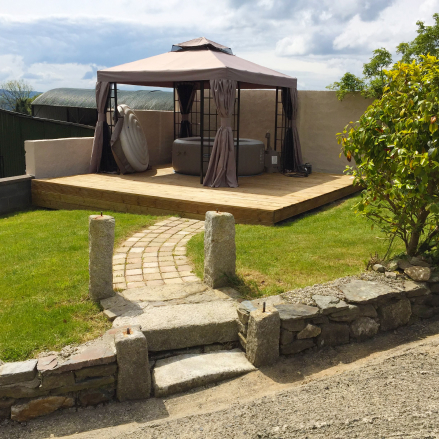In 2017, I established my own freelance business, offering services to Easytrip and other SMEs. This provided me with the opportunity to move from Dublin to Wicklow, bidding farewell to the rental market after 17 years and embarking on the ambitious endeavour of renovating an 1800s farmhouse to fulfil a mortgage-free dream. I personally undertook all renovation work while utilising a combination of savings and freelance income to fund the project. I needed to put the finer things in life on hold, but given the potential outcome, the sacrifices seemed small. I leveraged every contact and relationship I had for knowledge, upcycled anything I could, made anything I couldn't, and spent only what I absolutely had to.
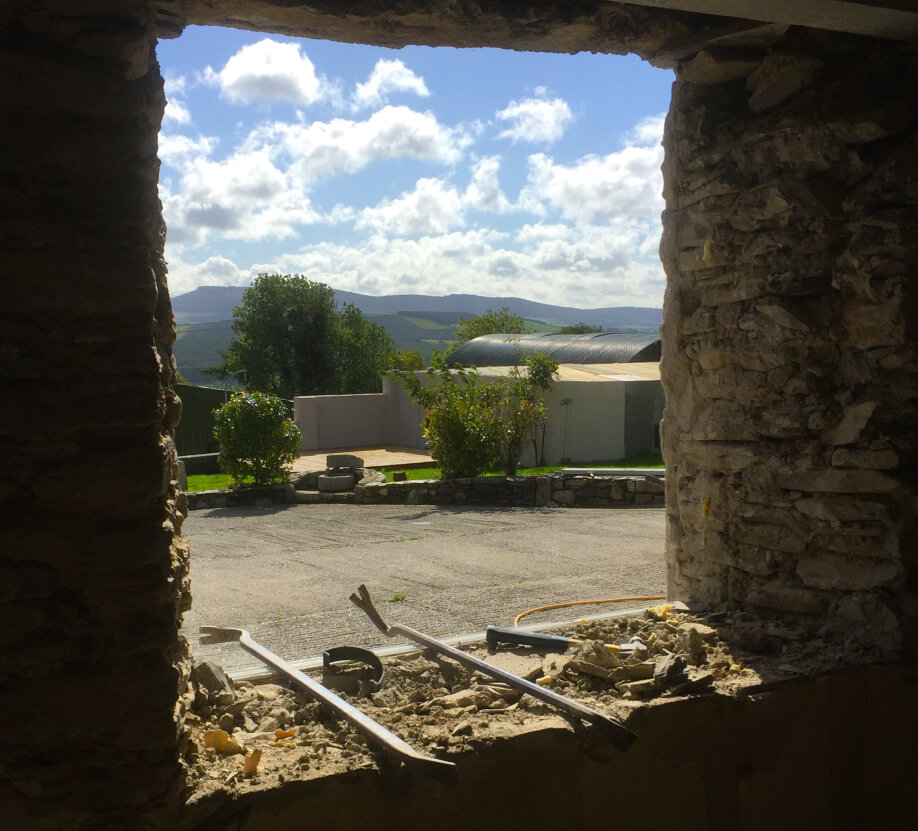
Over the course of three years, I became a builder, electrician, plumber, carpenter, tiler, interior designer, and much more in between. I learned too many lessons and skills to recount, but it was the less tangible and unexpected life lessons that took me by surprise. Working on an old home is a high-maintenance relationship, and the property will always demand more money, more energy, and more time. Nothing will ever work out as planned, and sometimes the relationship can seem a bit toxic and one-sided, with a never-ending, ever-growing list of tasks and chores. I found myself envying other "normal" people doing "normal things" as I tried to remember when I last had free time. I've learned just as much about myself and life as I have about how to knock out windows, underpin old clay stone walls, or dig in new ESB power lines. Sometimes, the best teachers in life are the ones with walls and crooked doors.
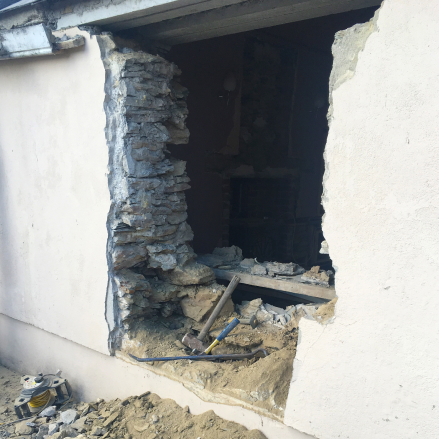

"Do not try to bend the plan. That's impossible. Instead, only try to realise the truth. There is no plan." What Spoon Boy said, but replace "spoon" with "plan". I quickly realised that having detailed plans and timelines when working with an old house was pointless. I soon abandoned my fancy-schmancy plans and adopted a "Goals & Priorities" model, looking ahead only about two or three weeks. For the tech-minded readers, it was akin to ditching waterfall and adopting agile sprints. That allowed me to focus on the job at hand, and every few weeks, I would adjust the bigger picture accordingly.

The first few weeks of the renovation were overwhelming. Giant holes in the side of the house, dust everywhere, plans obliterated, and a mountain of new problems I hadn't accounted for - I was beginning to panic hard. What the hell had I done?! Was I mad for taking on such a mammoth challenge? But, after slapping myself in the face, adjusting my mindset, and rethinking the project, the way forward became obvious. I needed to look past all the mountain of jobs that had to be done and focus on "the thing right now". I parked my worry and stress and trusted myself to eventually get everything done. I was able to appreciate the journey and enjoy the work. As counter-intuitive as it may seem, by accepting that the overall plan was not clear, "the thing right now" became crystal clear and, as I put more and more work behind me, I gained confidence. By documenting photos and videos of the before and after, that progress gave me hope and gusto on the days that I needed it (and there were quite a few).
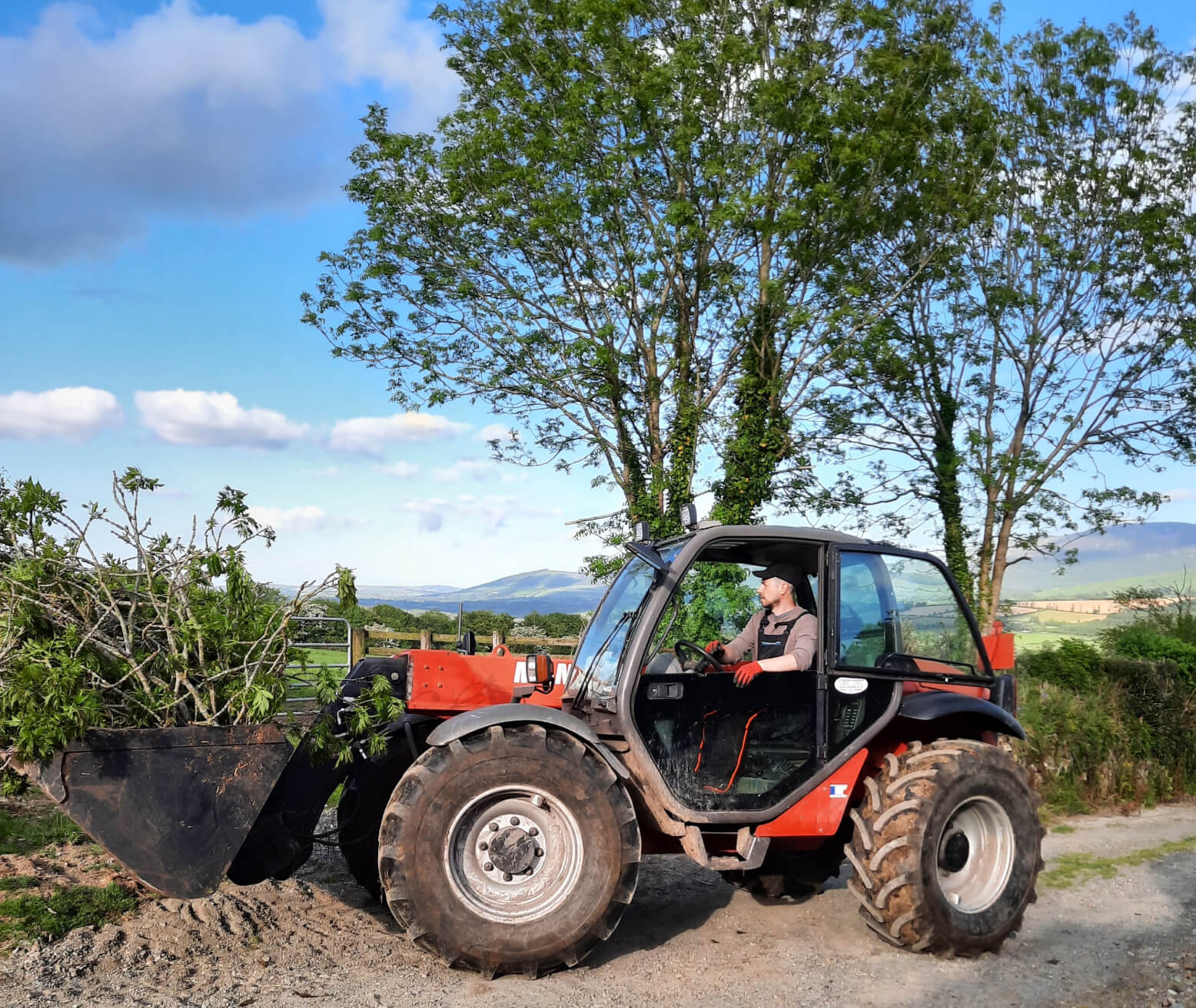
My dad used to say, "Dogs can't talk but they'll speak to you if you know how to listen." Of course, he was right. Dogs may not be able to speak words, but if you watch and tune into their wavelength, you can tell if they're happy, sad, afraid, hungry, sick, and a range of things in between. Turns out, an old house is similar. If you listen carefully to your house, it'll tell you what it needs. Insulation rather than fancy decor. Radon sumps rather than chandeliers. It's always a balance of what the house needs versus what you want as the person living in the house. The old clichéd "needs versus wants" story.

Any home that's been standing for such a long period of time will have its own idea of how things should be done, and if you're not inclined to listen, then life will be all the more difficult. The best-laid plans must be flexible. Early in the project, when I began ripping out the tiny window in the living area to install some fancy French doors, I encountered a foundation rock that would put Plymouth Rock to shame. It was only obstructing the space for the French doors by about 20 centimetres, so I had a choice: con saw and kango or listen to the house. I chose the latter and moved the French doors accordingly. Of course, this meant the plan for the living room would now need complete adjustment (twenty centimetres seems small, but it caused a lot of rework). But later, as I sketched and scribbled out ideas for how to fix the problems caused by my very own Plymouth Rock, I found myself thinking back to the 1800s and how the builder managed to get that behemoth into place, and I was glad I hadn't obliterated it. Of course, the entire house may have fallen down if I'd touched it too, so there was that.
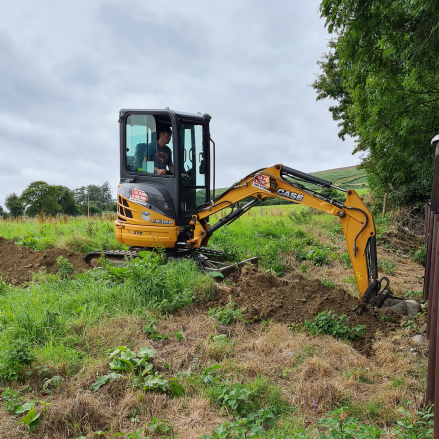
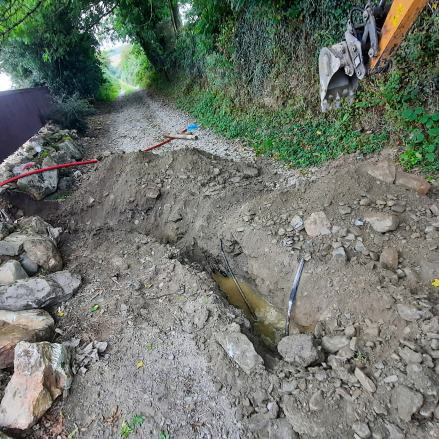
When in unfamiliar territory, the advice and guidance of the experienced are very important, so it's crucial to listen to others, but also don't! About 40% of the advice I was given was wrong, completely, absolutely, abysmally wrong. If you have trust issues, they'll be worse by the time you've finished your old home renovation. There are lots of great people with lots of great and helpful information, but after a few misdirections, I found myself checking and double-checking info. You need to know a little, and sometimes more than a little, about "the thing right now" in order to do it right. If you're completely novice and relying on info you're being told to be correct, it will be hit and miss and will cost you time.
Listen to your old home, listen to others but listen to yourself too (and do your homework).
Most people I know live in beautiful modern homes with wonderfully straight walls, 90-degree angles, and perfectly level floors, built by incredible tradespeople with materials and tools that would impress even James Bond's Q. Being a product designer where correct measurements, the right spacing, straight lines, and smooth curves matter, one of the most difficult things for me with this renovation was to let go of perfectionism and come to terms with the fact that not everything in the house would be perfect. But, what an 1800s farmhouse lacks in straight lines, it makes up for with character and uniqueness.
I've often found myself thinking back, as I sat in front of the fireplace (now a stove), to the generations of people who'd lived and raised families in the house. It's mind-blowing to think that people sat in the very same room before the famine, at the very same fireplace, looking out the very same window. It's important with an old home to take a beat before changing something and potentially removing that connection to the past. Does it need to be changed, and if so, how can that change be made respectfully?
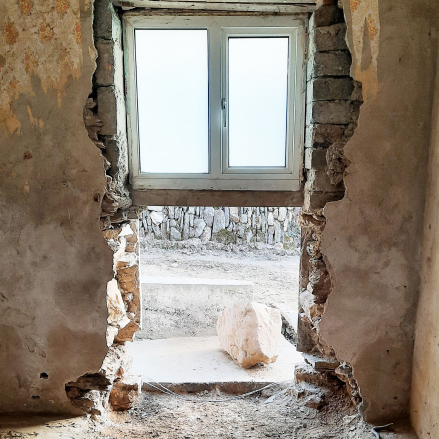
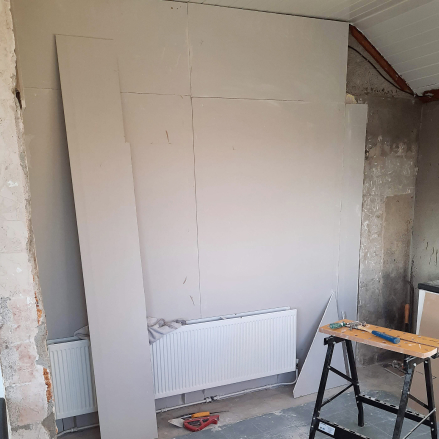
I made the decision to knock out all of the old tiny windows and replace them with either doors or full-length windows. I was prepared to sacrifice some of the essence of the house for light. But, as I installed each new window, I also boxed off the walls right to the floor, giving more floor space and bringing the thickness of the walls from outside to inside. This is now one of my favourite features in the house, and while it is modern and insulated and gives great light, it also tips its hat to the original builder and the two-and-a-half-feet-thick walls.
The maps for my house date as far back as 1830. So, it is over 190 years old and potentially even older, which means it was standing many years before the famine. Living in a home that pre-dates the famine and is potentially almost as old as the USA is pretty incredible. It's challenging to imagine the depth of history that's residing within these walls.
One of the major jobs of the renovation was to install a dual central heating system with an oil-fired boiler outside and a solid fuel boiler stove inside, replacing an old open fireplace. That meant ripping out the old granite fireplace stonework and digging into the wall to create an inset for the stove. Throughout the process, as I was removing old granites that hadn't been touched in nearly 200 years, I found an old piece of toughened cloth with something inside. I'm not superstitious or religious, but when I opened it and found a lock of red hair, I got goosebumps.

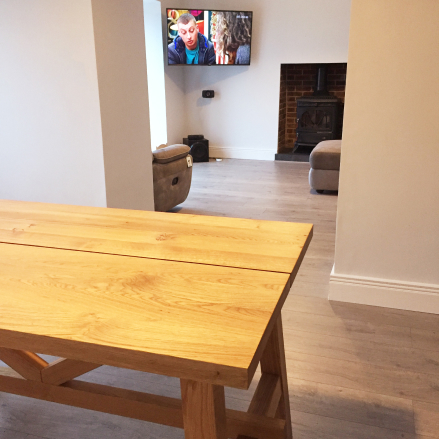
It took me a while to find someone who was able to give a possible explanation. I was told that older generations thought if they put a lock of a loved one's hair into a fireplace wall, when that loved one passed on they would come back for their hair after death, thus giving each a last chance to say goodbye. Yet again, the history of the house had stopped me in my tracks. When I was rebuilding the inset for the stove, I carefully built the lock of red hair back into the wall, and I may, or may not, after much coaxing, have placed a lock of bae's hair in there too!
At the beginning of the renovation, I had an old Black and Decker drill, a dodgy spirit level, a hand saw, a shovel with a hole in it, and a feisty cement mixer, with more attitude than a cement mixer should have. Things were getting done, but just not as efficiently as they could have been. While costs needed to be watched (if the renovation was to be done without a mortgage), deciding to invest in tools was one of the best decisions of the project. I won't go into too much detail about the tools, suffice it to say I cannot recommend Lidl's Parkside X20V range of power tools enough. Incredible tools, incredible batteries, and a three-year warranty. Most of the Parkside tools are made by Einhell, a reputable German brand, and while they are not DeWalt or Milwaukee, they are more than good enough for a renovation project without the hefty price tag. Every tool bought lasted the duration and is still going strong.
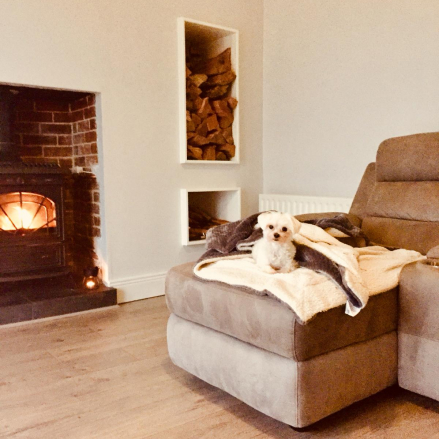
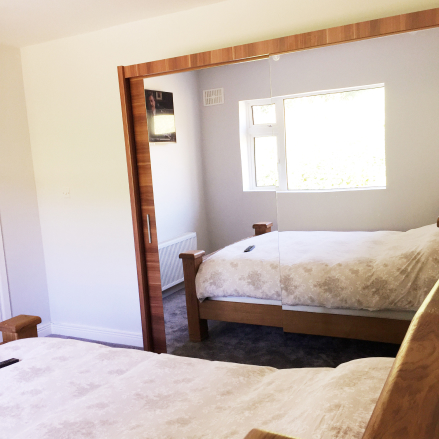
There is a marked difference between respecting history and living in it. So, I decided to embrace technology from early on in the project. Investing in decent tools from the outset, packing as much insulation into the rooms and attic as possible, radon sumps, dual heating systems, smart thermostats, Echo devices in every room, smart speakers, Phillips Hue in every room, Harmony hubs, HikVision CCTV, smart blinds, and more. I was determined to make the house as easy to live in as possible. I calculated times taken for repeated daily actions like turning on a light switch, walking to the thermostat, finding the remote, etc., and tried to remove those daily actions. Every aspect of daily life I thought through and tried to make those actions easier. One of the reasons I put French doors in the living area was for light but also to make it easier to bring in logs for the stove. I designed an inset log box into the wall beside the stove but at waist height to minimise bending and stretching. The goal was to think everything through and make it better, even if just by a little.
Renovating an old home by yourself without contractors, carpenters, builders, or help while also running your own freelance business takes time and lots of it. There's a huge amount of trial and error, and while there's lots of advice and information available, especially online, none will be specifically tailored to your old home's needs. It's okay to make mistakes; in fact, it's important that you do. Once I got over my first few mistakes and realised the world hadn't ended, I was less worried about making more. One caveat here is with structural walls; be careful messing around with those mofos. The world may not end, but the roof could come crashing down around your ears! Early on, I resigned myself to the fact that I was going to make lots of mistakes that I'd either fix or live with. You can't have the wins without the mistakes, and in the end, it's about getting the job done, no matter what. If I'd been afraid of making mistakes, I'd still be forking out rent or a mortgage.


And last but not least, it is so important to celebrate the achievements. Renovating an old home by yourself is incredible and satisfying, but it is also, at times, nothing short of torture. Whether it's a glass of wine sitting in a deck chair on a newly laid concrete floor or a fancy streaky bacon breakfast after a 24-hour straight shift, the mini celebrations signify a break and a milestone achieved. I've been asked numerous times if I'd do it again and the answer up to now has been, "absolutely not". But already that's softening to a, "never say never". The truth is, with an old home, the work is never done; there's always a list of tasks or something else to be fixed. But having given these old walls a new lease of life and becoming part of the fabric and history of the building, I can safely say it was all worth it. Of course, it's nice not having a mortgage draining the bank account every month too.
